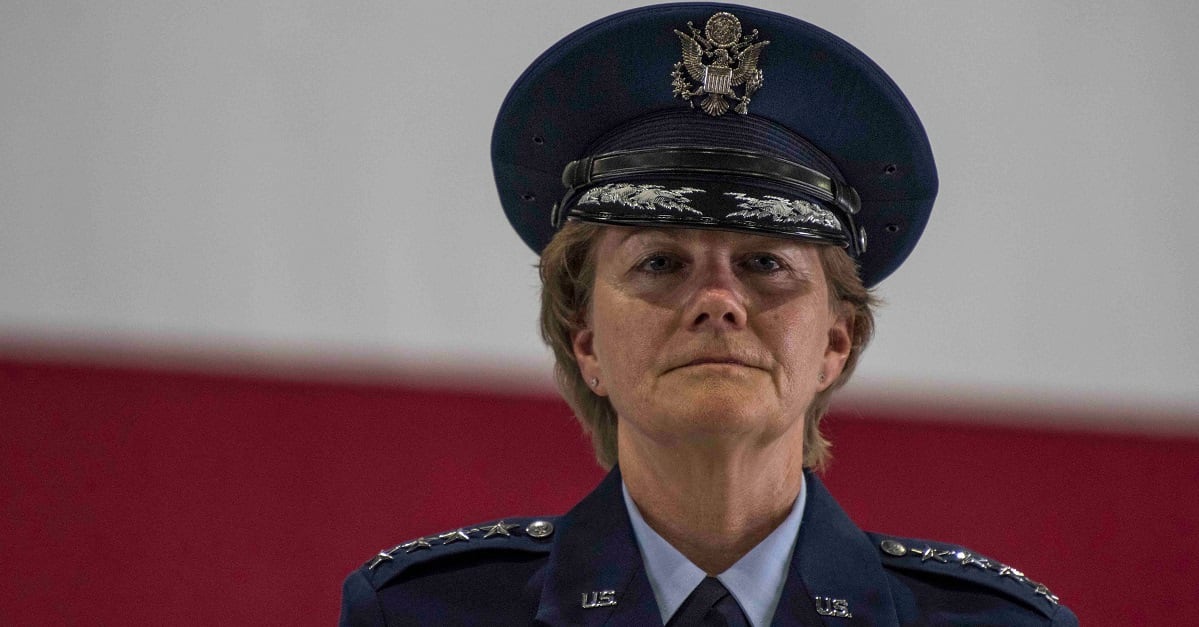In a great power conflict, mobility aircraft will be essential to deliver fuel and supplies to the warfighters. But increasing concern over anti-access/area denial threats from potential foes, and the fact that big bodied mobility aircraft present inviting, in fact, critical targets has the attention and concern of Air Force leadership.
The new head of Air Mobility Command is focusing on four key areas to improve the survivability of mobility aircraft and gain persistence over the battlefield.
Gen. Maryanne Miller, who took the controls Sept. 7 when Gen. Carlton Everhart retired, told reporters at the Air Force Association’s annual Air, Space and Cyber Conference that the Illinois-based command is looking at four categories of survivability improvements:
- Situational awareness of the battlefield
- New countermeasures to operate in a combat environment
- Self-defense systems
- Disciplined signature management
“Looking at each one of these categories will help advance the survivability for our platforms in the threat environment,” Miller said Tuesday.
Miller is carrying forward work that was done under her predecessor. Early this year, AMC completed an assessment about how to improve the survivability of aircraft in contested environments. The “High Value Airborne Asset” study recommended improvements to communications, situational awareness and self-protection systems.
There are many different technologies to consider and develop for self-protection. including light armor, signature management tech and high-energy lasers. Former AMC commander Gen. Carlton Everhart often talked about his desire to put lasers on mobility aircraft, beginning with the KC-135, and the command has also been working to improve secure communications, notably on the C-17.
The service needs integrated situational awareness capabilities that provide all aspects of pertinent battlefield information.
New sensors will help the command better understand everything that’s happening within the battlefield. As Air Mobility Command looks at how best to build that situational awareness, it could mean building sensors onto the aircraft or new air frames to meet those requirements.
“Given the threat environment, it’s probably a little bit of both,” Miller said.
With signature management, or detection avoidance, Miller said AMC is looking at new air frames that will have common cockpits, advanced propulsion systems, payload, offload, range, speed and fuel efficiency.

Miller said the command is figuring out if modifications can be made on current air frames or if new ones need to be built.
“We’re really trying to take advantage of signature management properties associated with each air frame itself,” she said.
Meanwhile, U.S. Transportation Command and the Cost Assessment and Program Evaluation organization within the Office of the Secretary of Defense have been assessing the number of tanker aircraft, airlift aircraft and sealift ships needed to meet future combatant commander requirements.
The study, known as the Mobility Capabilities and Requirements Study, is expected to be completed this fall.
“America’s air refueling fleet is the most stressed of our air mobility forces," Gen. Darren McDew, then-commander of USTRANSCOM, told the House Armed Services Committee earlier this year. “The combination of an aging fleet, increasing demand, and global tanker distribution puts a significant strain on this scarce national resource.”
“Our ability to deploy decisive force is foundational to the National Defense Strategy. The size and lethality of the force is of little consequence if we can’t get it where it needs to go when we want it there,” said McDew.
The rate of change in technology requires quick innovation to overcome threats, Miller said.
The force needs aircraft that are “able to survive, integrate and operate in DoD forces in current and future threat environments.”
Miller said the key is understanding the threats of the future and modifying or building a plane that allows the Air Force to operate through that threat environment.

Charlsy is a Reporter and Engagement Manager for Military Times. Email her at cpanzino@militarytimes.com.
